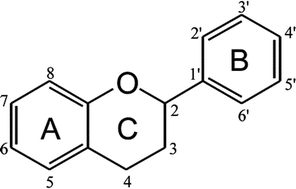Phenolic compounds are produced in the seeds and skins of grapes, and are transferred into wine during the fermentation process. Phenolic compounds can also be imparted into wine from maturation and storage in oak wood barrels after fermentation. The consumption of wine, an alcoholic beverage, has been observed in epidemiological studies to reduce the risk of cardiovascular disease and certain cancers, as well as diabetes and dementia, in a J-shaped relationship between amount consumed and level of risk. The bioactivity of wine primarily observed in vitro and ex vivo, may result from wine's relatively high content of phenolic compounds, which is similar to that observed in fruits and vegetables; a Mediterranean fruit and vegetable rich-diet is also associated with a reduced risk of cardiovascular disease and cancers. If the wine-derived phenolic compounds or their active metabolites are not absorbed in sufficient amounts and in a readily available form for cells, however, then they are less likely to have any significant in vivo activity. This review considers and discusses the available data to date on the bioavailability of the different wine-derived phenolic compounds in humans.

You have access to this article
 Please wait while we load your content...
Something went wrong. Try again?
Please wait while we load your content...
Something went wrong. Try again?


 Please wait while we load your content...
Please wait while we load your content...